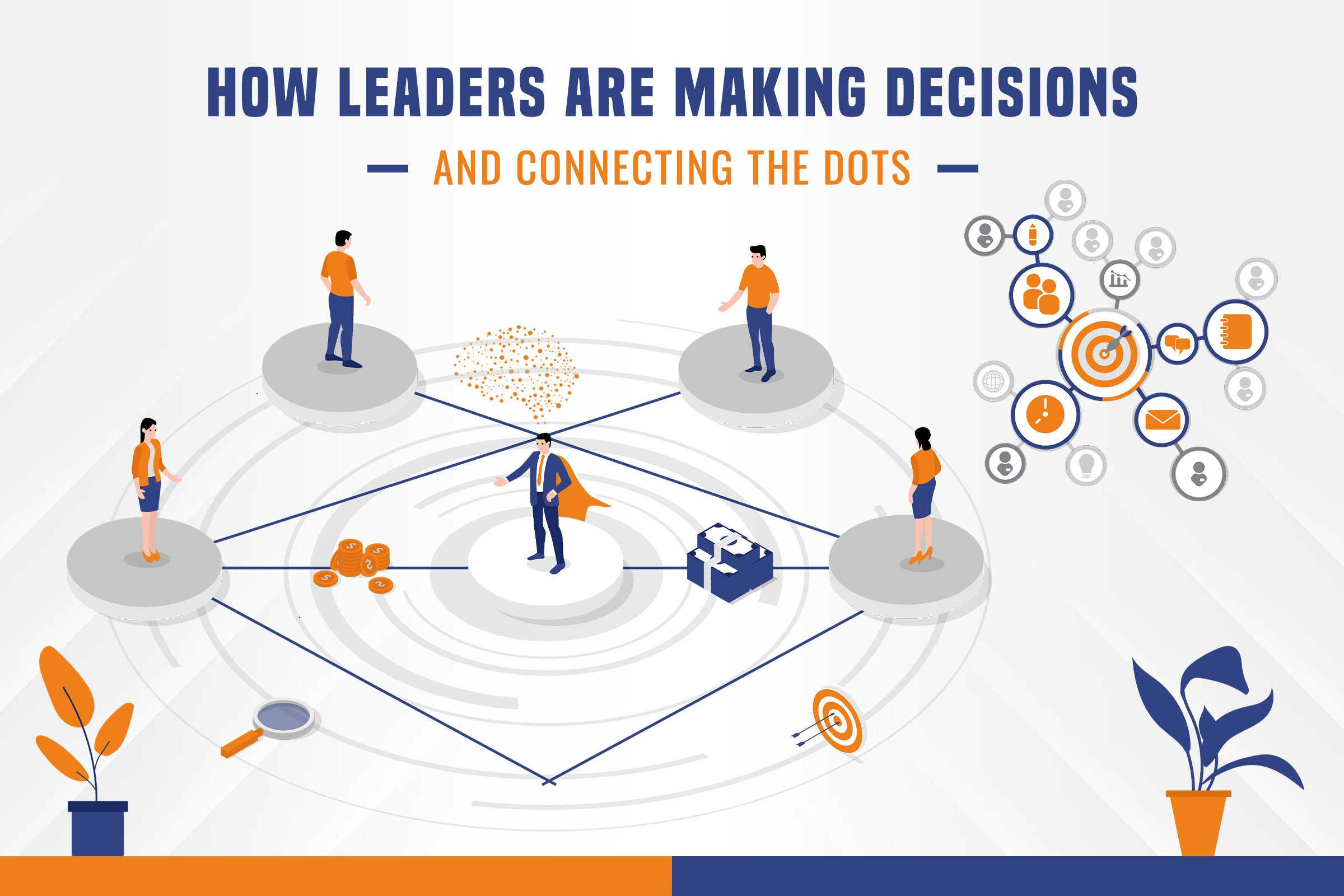
How Leaders Are Making Decisions And Connecting The Dots
In the realm of leadership, decision-making is a crucial skill that can significantly impact an organization's success. Great leaders possess the ability to analyze complex situations, evaluate available information, and make informed choices that drive their teams and companies forward. Furthermore, they are adept at connecting seemingly unrelated dots to form cohesive strategies that deliver outstanding results. In this article, we will delve deep into the art of decision-making and explore how exceptional leaders establish connections to create a harmonious and thriving work environment.
How Leaders Are Making Decisions
Effective decision-making is not just about making choices but also about understanding the ramifications of those choices on the organization and its members. It involves a systematic approach that considers the long-term consequences of each option. So, how do leaders make decisions?
1. Defining the Problem
Before arriving at any decision, leaders take the time to identify and define the problem at hand. This requires clear communication with team members and stakeholders to gather insights and different perspectives on the issue.
2. Gathering Relevant Information
Leaders engage in extensive research and data analysis to collect all pertinent information related to the problem. This includes seeking advice from subject matter experts, participating in Leadership and Management Training Courses, and studying historical data, market trends, and industry best practices.
3. Weighing Options
Once armed with the necessary information, leaders evaluate multiple options. They consider the pros and cons of each alternative, examining how it aligns with the organization's goals and values.
4. Consulting the Team
Exceptional leaders involve their teams in the decision-making process. They encourage open discussions and foster an environment where team members feel comfortable sharing their opinions and concerns. Proper Leadership Training and Development encourages employees to put forward their opinions and constructive thinking.
5. Assessing Risk and Uncertainty
Every decision comes with a degree of risk and uncertainty. Leaders carefully assess these factors and develop contingency plans to mitigate potential negative outcomes.
Connecting the Dots: Building Strong Relationships
In addition to effective decision-making, successful leaders possess the ability to connect the dots between various elements within their organization. This skill allows them to create a cohesive and synchronized environment that propels the team toward collective goals.
1. Identifying Interdependencies
Leaders are keen observers who identify interdependencies between different processes, departments, and individuals. By recognizing these connections, they can optimize workflows and ensure efficient collaboration.
2. Cultivating a Collaborative Culture
Encouraging a culture of collaboration through proper Leadership Training and Development in place is essential for connecting the dots effectively. Leaders foster open communication channels, promote teamwork, and break down silos, ensuring information flows freely across the organization.
3. Recognizing Patterns
Exceptional leaders possess pattern recognition abilities. They can discern recurring themes and trends, enabling them to anticipate challenges and opportunities and devise proactive strategies.
4. Building a Unified Vision
Connecting the dots requires a shared vision that aligns everyone toward a common purpose. Leaders articulate this vision clearly and passionately, motivating their teams to work cohesively toward the organization's mission.
5. Embracing Innovation
Innovative leaders explore new possibilities and technologies that can elevate their organization's performance. They are not afraid to challenge the status quo and embrace change as an opportunity for growth. That is why state-of-the-art Leadership and Management Training Courses are extremely important as they play a vital role in shaping the perfect and the most ideal leadership mentality.
Leveraging Emotional Intelligence
Emotional intelligence plays a pivotal role in both decision-making and connecting the dots. Leaders who possess high emotional intelligence can understand and manage their emotions and those of others, leading to better outcomes.
-
Empathy in Decision-Making
Leaders with empathy can relate to the feelings and perspectives of their team members. This allows them to make decisions that consider the welfare and well-being of their employees.
-
Emotional Resilience
In times of uncertainty or crisis, emotionally resilient leaders remain composed and inspire confidence in their teams. Their ability to handle stress positively enhances the decision-making process.
-
Developing Emotional Bonds
Effective leaders build emotional bonds with their teams. This creates trust and loyalty, enabling a smoother flow of information and fostering strong relationships within the organization.
-
Nurturing Inclusivity
Inclusive leaders value diverse perspectives and foster an environment where every voice is heard and respected. This promotes effective communication and strengthens the ability to connect the dots.
-
Conflict Resolution
Leaders with strong emotional intelligence can navigate conflicts and disagreements constructively. They find solutions that satisfy all parties involved, preserving harmony and productivity.
Final Words
Leadership is an intricate art that involves making decisions and connecting various aspects to achieve collective goals. Effective leaders prioritize well-informed decision-making, foster collaboration, and leverage emotional intelligence to strengthen their organizations. By constantly honing these skills, leaders can create a thriving work environment where teams unite to overcome challenges and achieve remarkable success.
